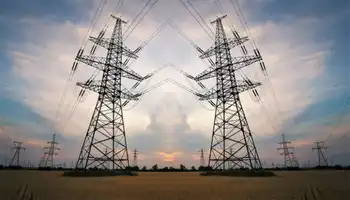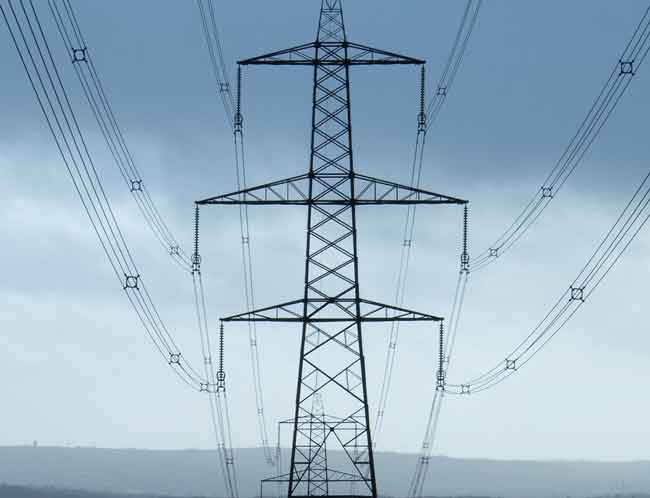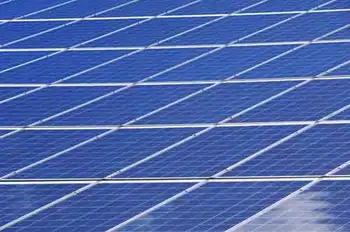Hoover Dam power plant modernization continues
LAS VEGAS, NEVADA - Hot weather brings a spike in demand for water and power, so Hoover Dam keeps humming all summer long.
Things tend to quiet down from October to April, so that's when workers try to catch up on equipment upgrades and large-scale maintenance projects.
Lately, a lot of that work has been geared toward improving power plant performance in the face of the lowest water levels in the Lake Mead reservoir since 1965.
The dam's power customers plan to spend millions of dollars to squeeze more electricity from the same amount of water and compensate for a loss of power capacity as a result of the shrinking lake.
The surface of the reservoir dropped 120 feet in the last decade, as the Colorado River came under the grip of the worst drought on record and increased demand. The resulting loss of water pressure - known as power head - has reduced the dam's power generating capacity by 20 percent.
The dam and its power customers are trying to squeeze as much power as possible out of the water pressure they do have.
One change involves devices called wicket gates.
"They look like a circular Venetian blind so they can control how much water can flow into the turbine," said Dan Pellouchoud, an engineer who has been overseeing power upgrades at the dam for the past eight years.
The old cast-steel wicket gates are being replaced with new stainless steel ones that are more streamlined and can open wider to let in a greater volume of water with greater force.
"We make more energy with the same water," Pellouchoud said.
From the lower floors of the powerhouse on the east side of the dam straddling the Nevada-Arizona state line, you can hear what he is taking about.
It's the first sound a unit makes as it starts up: a roar of water gushing into the turbine at a rate of 3,200 cubic feet per second, enough to fill an Olympic-size pool in less than half a minute.
Soon the louder sound of the turbine spins up to replace the roar. The water just used to push the turbine is then released from the power plant to fill an order downstream.
Six of the dam's 17 turbine-generators have received new wicket gates since the upgrades began in 2005.
The improvements have resulted in a 3 percent to 4 percent increase in efficiency and the recovery of about 84 megawatts of power capacity lost to low water conditions in Lake Mead. That power has an annual market value of $2.7 million.
Two more units will get new gates as part of regularly scheduled overhauls in the next two years.
The work is slow going, in part, because each turbine-generator is several stories tall and as wide as a house. The wicket gates alone are more than 6 feet long and weigh about 2,300 pounds apiece.
It costs about $1 million to replace all 24 wicket gates on a single unit.
An even bigger investment will be made starting in 2012, when several turbines - the actual water wheels, not the whole generator units - are scheduled to be replaced with new models designed to run smoothly regardless of the amount of water in Lake Mead.
The existing turbines tend to "run rough" when the reservoir's water level is very high or very low, Pellouchoud said.
The plan is to replace four turbines over the course of several years, and then decide if the cost or the amount of water in Lake Mead warrants converting all 17 units.
Each new stainless-steel turbine costs about $2.5 million and weighs about 36 tons.
The cost of improvements to the two powerhouses at Hoover Dam are shared by its customers, which include 15 electric utilities in Nevada, California and Arizona.
Ken Rice is an area manager for the U.S. Bureau of Reclamation, which operates Hoover Dam and manages water deliveries to farms and cities downstream in Arizona and California.
He said the dam continues to make all of its water and power deliveries despite the decline in capacity. These improvements are really more about generating power as efficiently as possible to keep its price down for customers, he said.
Water remains the top priority. After all, the dam was built to control floods and manage water deliveries on the Colorado River, not for its potential as a power source.
"The first goal is deliver the water," Pellouchoud said. "The second goal is make as much energy as possible with the water you deliver."
Related News

Investing in a new energy economy for Montana
BILLINGS - Over the next decade, Montana ratepayers will likely invest over a billion dollars into what is now being called the new energy economy.
Not since Edison electrified a New York City neighborhood in 1882 have we had such an opportunity to rethink the way we commercially produce and consume electric energy.
Looking ahead, the modernization of Edison’s grid will lower the consumer costs, creating many thousands of permanent, well-paying jobs. It will prepare the grid for significant new loads like electric transportation, and in doing so it will reduce a major source of air pollution known to directly threaten the…




